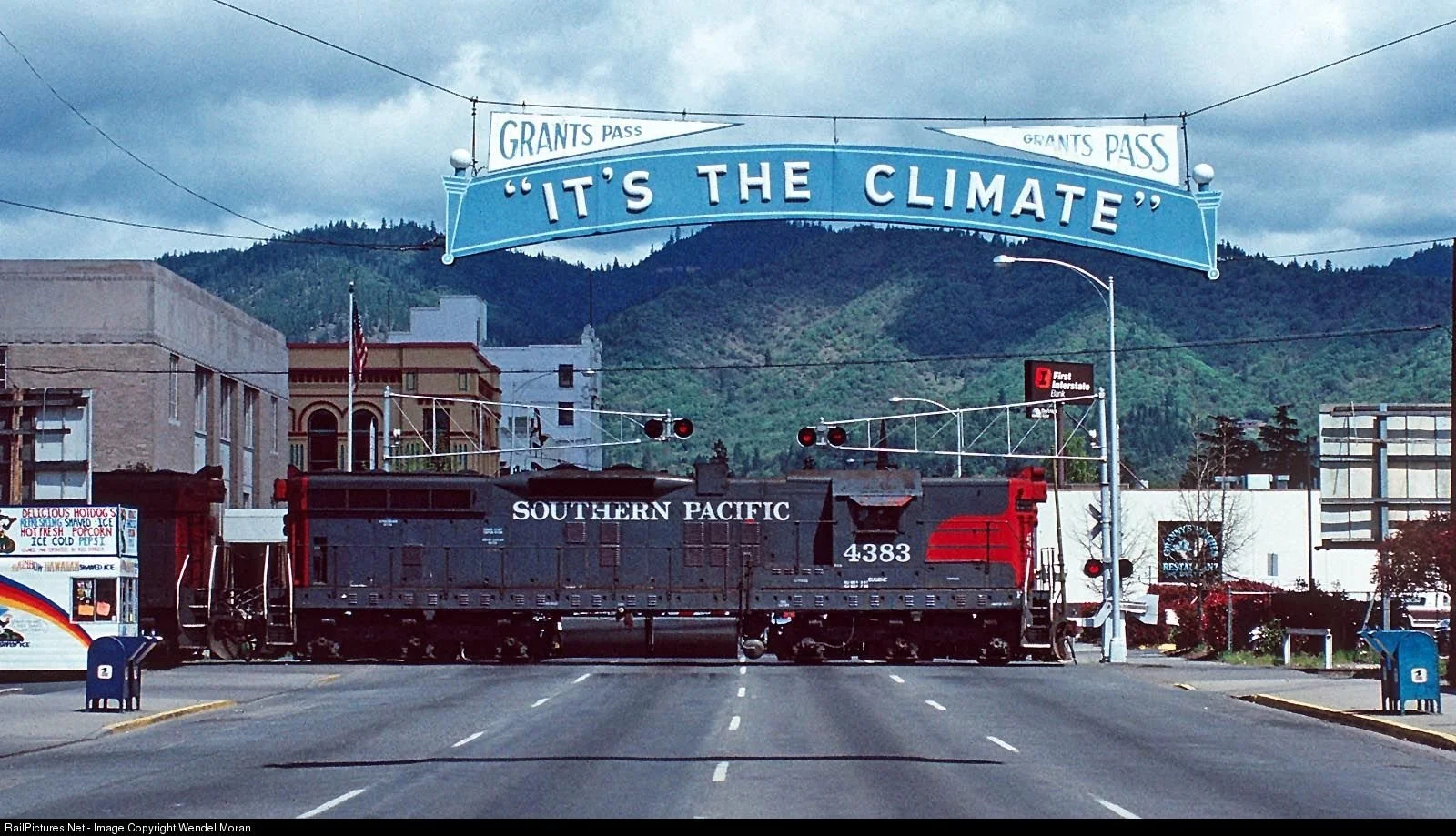Josephine County
Grants Pass, Oregon... The Town
Grants Pass is about 60 miles north of the California border in Southern Oregon. It's a town full of beauty, history, and scenic attractions. Due to its historic buildings and homes, downtown Grants Pass is a National Historic District. Antique shops, ice cream parlors, and sidewalk espresso stands abound in the city. Stroll through downtown and admire the beautifully restored historical buildings.
There's nothing like the Rogue River running through Grants Pass. Riverside Park is located on the Rogue River and is a wonderful place to picnic and walk along the Rogue. Grants Pass and nearby Merlin are often called the "whitewater rafting capital" of Oregon, and more than 25 outfitters offer rafting adventures there.
Visitors can take a jet boat tour through Hellgate Canyon from Grants Pass. Don't forget to bring your cameras to capture the wildlife. Congress designated the Rogue River a National Wild and Scenic River in 1968. There's an unspoiled wilderness world for visitors!
The History...
In the 1820s, Hudson's Bay Company hunters and trappers followed the Siskiyou Trail through the site. On their way to the Willamette Valley, settlers traveled the Applegate Trail in the late 1840s. The city says Grant's name is in honor of Ulysses S. Grant's victory at Vicksburg, and Virginia Josephine Rollins Ort may have inspired Josephine Creek, which in turn inspired the county's name.
Jesse and Lindsay Applegate traveled the Oregon Trail in 1843 from Missouri with a group of settlers. Their young sons died crossing the Columbia River on a raft carrying all of their belongings. As a result, the Applegate brothers decided to backtrack and find a safer, alternate route to Oregon. Through Nevada, California, and eventually the Rogue Valley, they forged a new trail from Fort Hall, Idaho, in 1846. They failed to notice the spectacular beauty which would one day become Oregon's greatest tourist attraction. About five miles west of present Grants Pass, the Applegate party followed the south side of the Rogue River.
Many Rogue River scenic waterway guided fishing and boating trips leave from Grants Pass, Oregon, including Hellgate Canyon. The Rogue River runs 215 miles from the Cascade Range to the Pacific Ocean near Gold Beach, Oregon. A tributary of the Rogue River, the Illinois (Illy) flows 56 miles from Kerby through the Siskiyou National Forest and Kalmiopsis Wilderness before joining the Rogue near Agness. It's also a scenic waterway, and a section of the Rogue River near Grants Pass is wild and scenic. The Siskiyou Mountains are where it all began.
The first settlers came here in 1852 when rich minerals were discovered at Sailor Diggings (later named Waldo). Many U.S. Army forts were built in the county during the Rogue River Indian War (1855–1858). Southern Oregon got its first gold mine in 1851 when prospectors moved to the Illinois Valley. On February 14, 1859, Oregon joined the Union.
When Grants Pass became part of Josephine County in 1885, the Oregon Legislature built Grants Pass' first prison in Kerby, the county seat. This was done to ensure a railway hub was located within the new county. Grants Pass post office was established on March 22, 1865. Grants Pass was incorporated as a city in 1887.
When Elijah Davidson hunted bears near Sand Mountain (now Mount Elijah), he found the Oregon Caves. The caves were made a national monument by William Howard Taft in 1909. Currently, they're under the National Park Service. https://www.nps.gov/orca/learn/historyculture/index.htm
Grants Pass upgraded its tourist facilities in the 1920s. Various events were arranged by Grants Pass Cavemen booster club members, who wore furs and carried clubs. One of their activities was blocking traffic; they bid on the construction of the San Francisco-Oakland Bay Bridge (23,756,000 deer hides were needed), inducted politicians like Mark Hatfield and Thomas E. Dewey during the 1948 presidential campaign, etc. Russian newspapers used Grants Pass Cavemen pictures to show how the wealthy 'roister' in America.
By the 1920s, bridges had been built across the Rogue River in Grants Pass, but ferries still transported people and cars. The original bridge was destroyed by a flood in 1890. Conde McCullough's bridges, built in the early 20th century, still stand in Grants Pass today.







